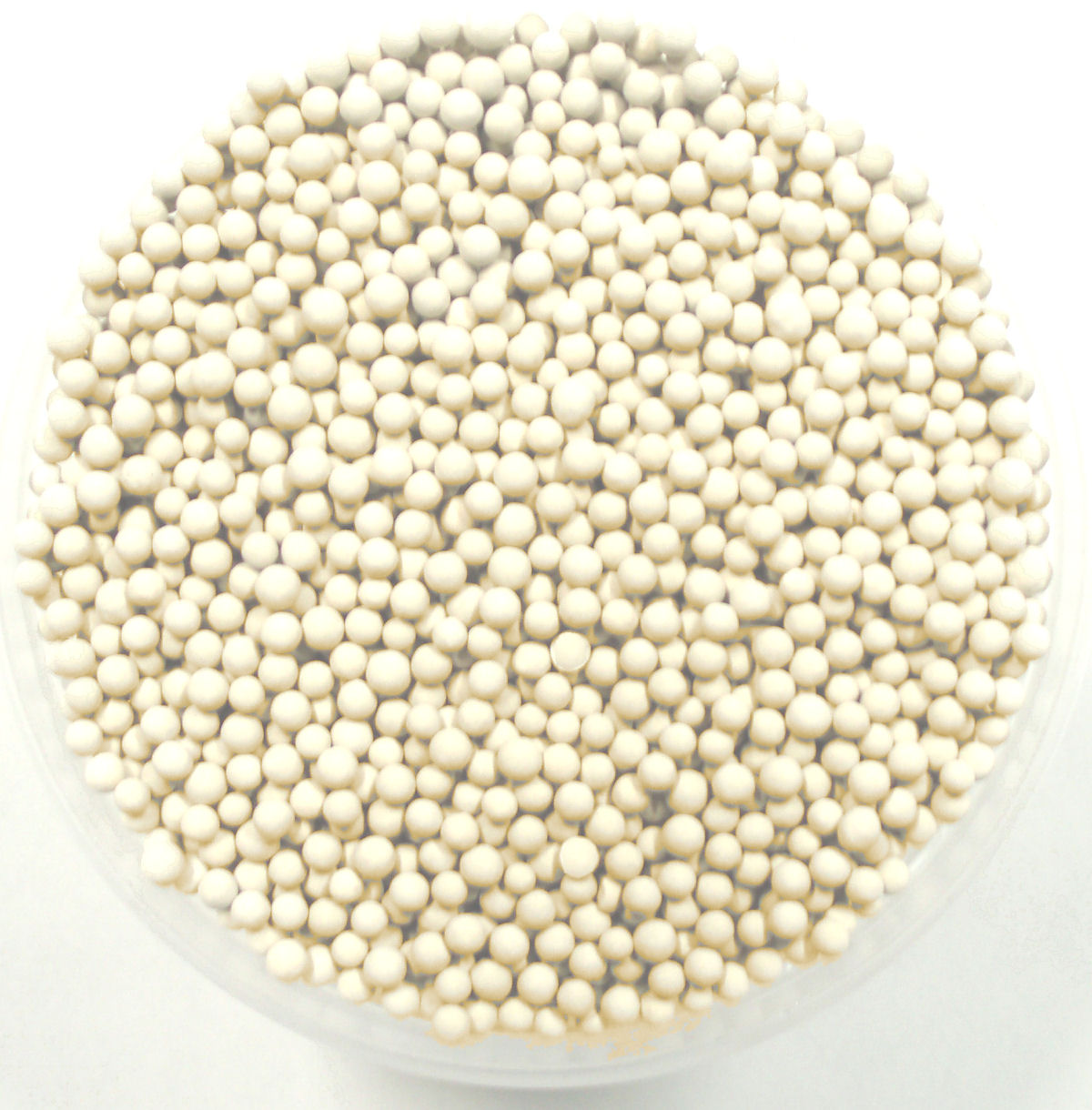How Molecular Sieves Work:
Molecular sieves, because of their
crystalline composition and carefully controlled pore sizes, will yield virtually
water-free products. While both the solvent and the water will adsorb strongly
to the molecular sieve surfaces, the large surface area within the pores is
only accessible to the smaller water molecules, so they are effectively removed
from the solvent. From the table below it can be seen that water (1.93A) will
enter that 3A pore size while acetone (3.08A) will largely be excluded. Water
will be able to occupy the large surface area inside the pores and thus be
removed. If the solvent could also enter the pores, it would compete with
water for the surface area and there would be little or no removal of the
water from the bulk solvent. Type 4A molecular sieve is not suitable for drying
ethanol, methanol, or acetone since the pore size does not exclude these solvents.
Molecular Radius, nm |
Water |
0.193 |
| Acetone |
0.308 |
How to Use the Sieves:
Running the solvent slowly through
a column of the molecular sieves would be the most effective way to remove
water. Typically though, dried sieves are just placed into the bulk solvent
container (about 5%-10% by volume) to remove the water.
How to Reactivate:
Molecular sieves can be regenerated by evacuating or purging, usually at elevated temperatures. The purge gas temperature must be sufficiently high to bring the molecular sieves to a level of 350 to 450ºF. If adequately regenerated, it is possible to dry fluids to less than 0.1 ppm H20.
Also See: Drying Agents for Common Solvents
| 
